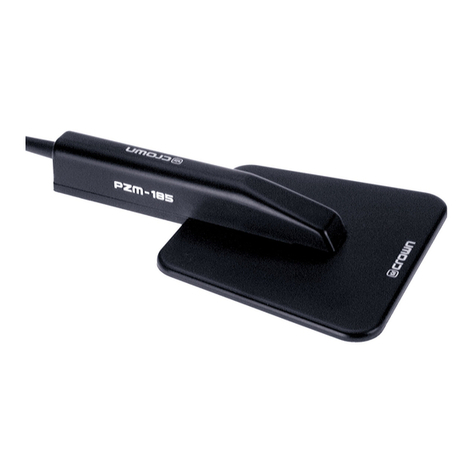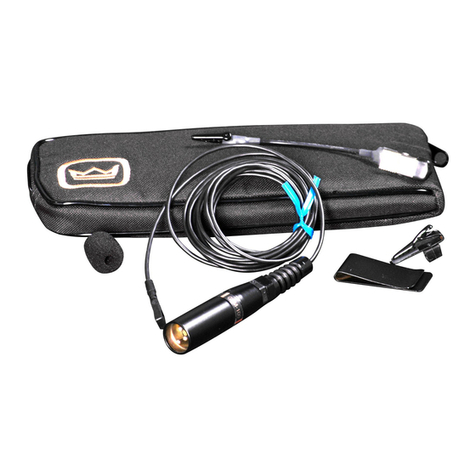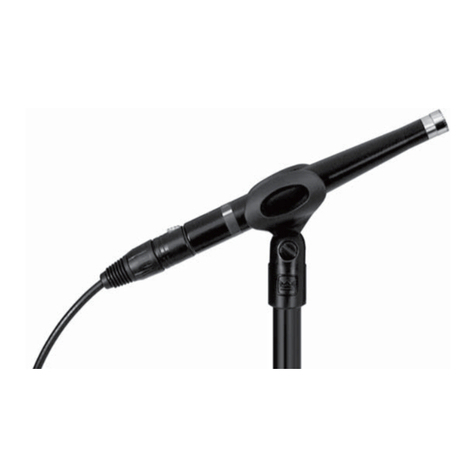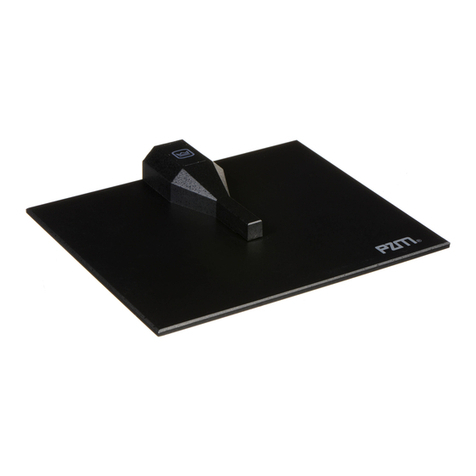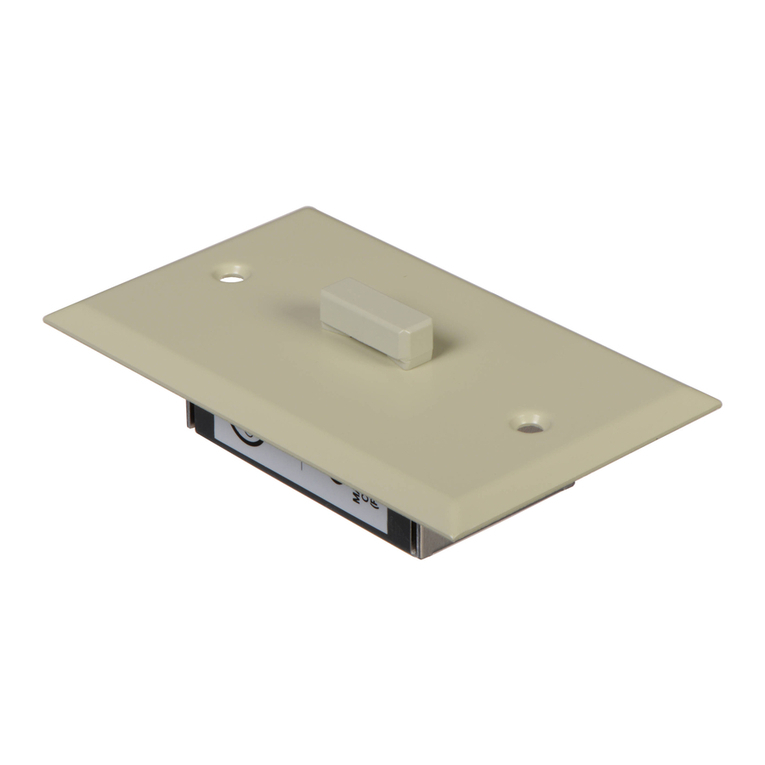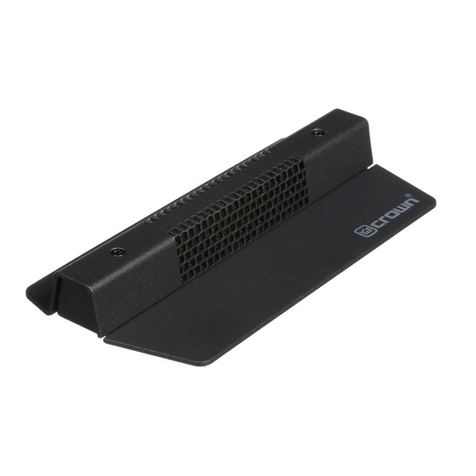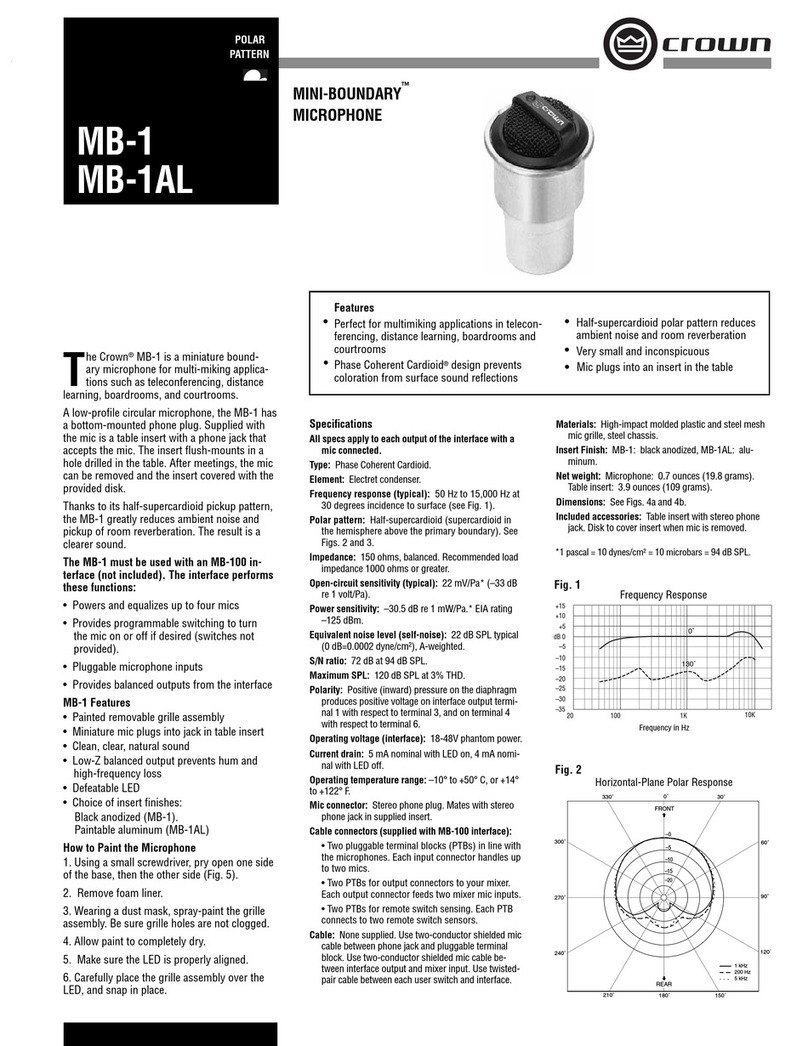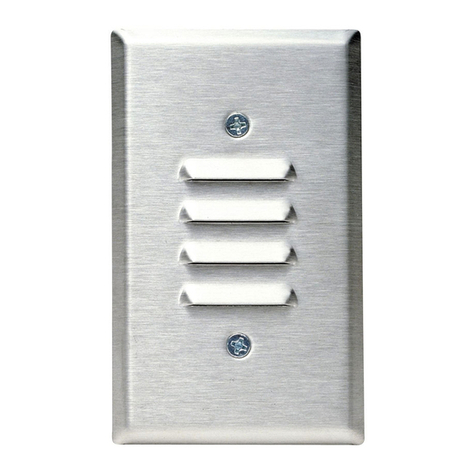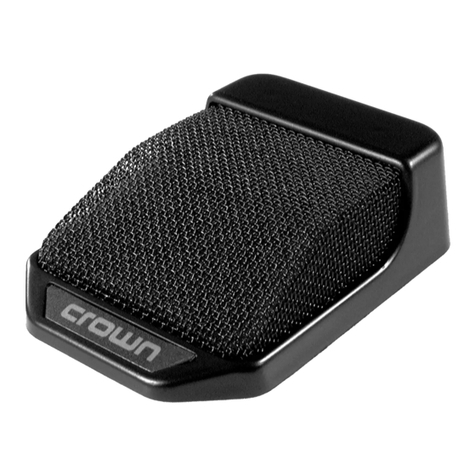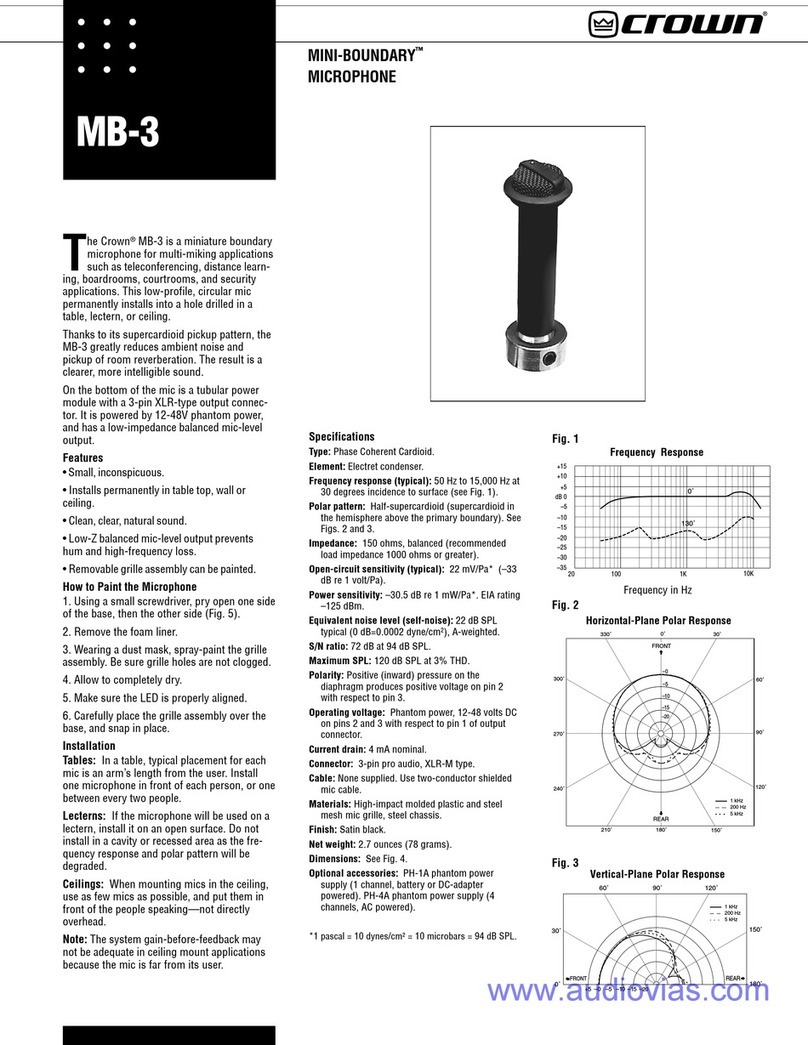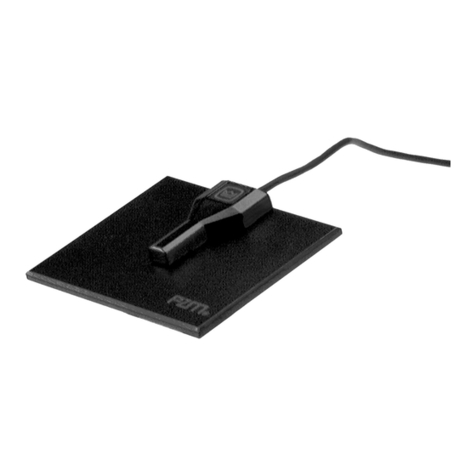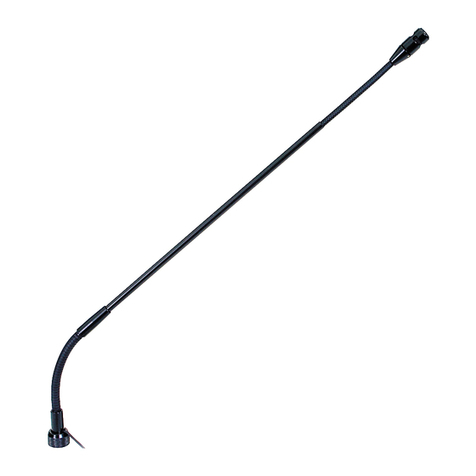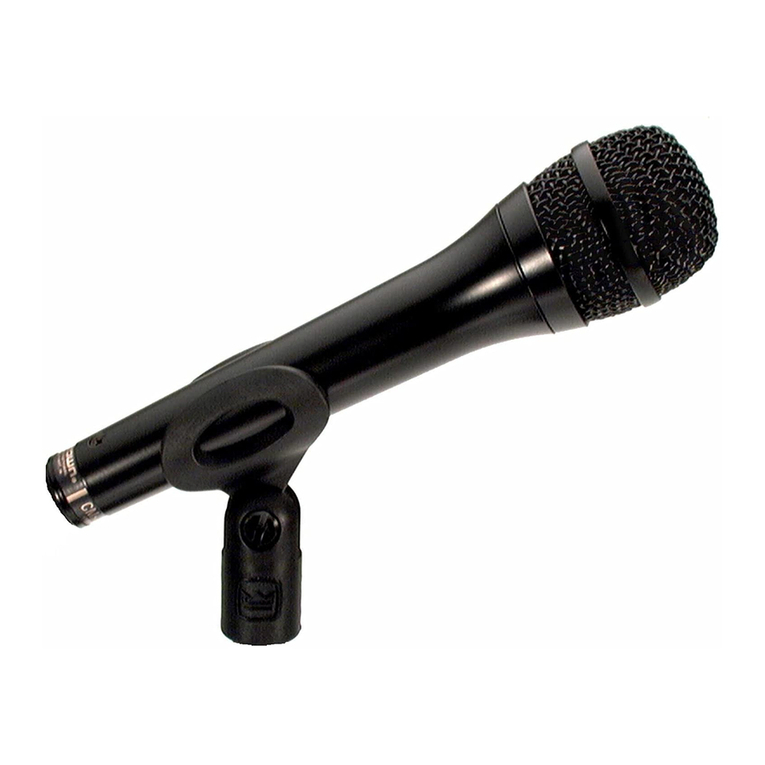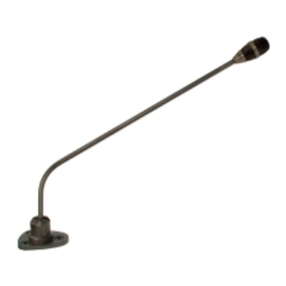
In live-to-2-trackrecording,we recommend that the
final placement decisions be made while monitoring on
loudspeakers for more-accurate imaging.
If the correctly monitored stereo spread isexcessive
(because of close mic placement),run the SASS signals
through a stereo mixer with pan pots,and pan the two
channels toward center until the stereo spreadis correct.
This can be done during recording or post-production.
Fig.58
Center sound source too close to
SASS:mic capsules can't“hear”it,
because its sound is blocked.Re-
sult:weak center image.
CentersoundsourcefarfromSASS:
bothmiccapsuleshearit.Results:
strong center image.
Fig.59
20
mics have weakdeep bass.The SASS does nothave this
problem because it is not directional atlowfrequencies.
It has excellent bass response extending to 20 Hz.
Simple to Use
Mid-side stereo microphones require a matrix box be-
tween the microphone and recorder.This box converts
the mid and side signals from the microphone to left
and right signals for stereo recording.The SASS already
hasleftandrightoutputs,soitneedsnoin-linematrixbox.
It’s easyto tell where to aim the SASS by looking atit.
In contrast,some stereo microphones are difficult to
aim properly.
Excellent Performance
The SASS has very wide-range,smooth frequency
response (20 Hz–18 kHz),and very low pickup of
mechanicalvibrations and wind noise.
Summary
The SASS is a stereo microphone using PZM® technol-
ogy.The unit provides excellent stereo imaging,hasa
natural tonal balance,ismono-compatible,iseasyto
use,and costs less than the competition.It comeswith
a carrying case and a full line of accessories.
HOW TO USE THE SASS
Do not place the SASS closer than 3 feet from the
sound source,or the centerimage will be weak or
muffled (Fig.58).
Large musical ensembles (orchestra,
band, choir, pipe organ)
Place the SASS 4 to 15 feet from the front row of
musicians.Angleitdown so that itwill be aimed at the
performers when raised,and raise it about 15 feethigh
on amicrophone stand (Fig.59).Closer placement to
the performers will sound more edgy,detailed,and dry:
farther placement will sound more distant,blended and
reverberant.Try to find a spot where you heara pleasing
balance betweenthe direct sound from the ensemble
and the hall ambience.
Because the SASS is quite sensitive to the sides aswell
as the front,closer placement will notbe asdry as with
directional microphones.Hence,the SASS canbe placed
into an ensemble farther than is ordinarily possible,
providing greater detailand spread,if that is desired,
withoutfeelingforced or unnatural.The centerof the
sound image and the hall reverberation are still retained.
If you are recordinga choir that is behind an orchestra,
experiment with the stand heightto find the best
balance betweenthe two sources.The stringsproject up-
ward while the choir projectsforward,so you might find
a better balance at,say,9 feet high rather than 15 feet.
Small musical ensemble or soloist
(quartet, small combo, background
harmony vocals, solo piano, harp,
or guitar)
Place the SASS 3 to 8 feet away at ear height.Move closer
for less reverb andnoise,farther formore hall acoustics.
For a grand piano,place the SASS in-line withthe lid.
Placement near the hammers sounds more trebly; place-
ment near the tail sounds more bassy.
Drum set
See Fig.60.Place the SASS above the level of the snare
drum,below the cymbals,aiming at the snare drum
about 3 feet away,midway between the mountedtom
and floor tom.Youmay needto boost afewdB around
10 kHz - 15 kHz.Add another microphone of your
choice in the kick drum.The SASS alsoworks well as
an overhead mic.
INTRODUCTION
A boundary microphone is a miniature microphone
designedto be used ona surface such as apiano lid,
wall,stage floor,table,or panel.Mounting aminiature
mic ona surface gives several benefits:
•A clearer,more natural sound quality
• Extrasensitivity and lowernoise
• Consistent tone qualityanywhere around the
microphone
• Natural-soundingpickupof room reverberation
Crownboundarymicrophonesinclude the PZM,PCC,
MB,and SASS series microphones.This guide explains
howthey work and how to use them.For information
on the CM,GLM,and LMmodels,please see theCrown
MicrophoneApplicationGuide.
BACKGROUND
Inmanyrecordingandreinforcement applications,
the sound engineerisforced to place microphonesnear
hard reflective surfaces.Some situations where this
might occurare recording an instrument surrounded
byreflective baffles,reinforcing drama or opera with the
microphonesnear the stage floor,or recordinga piano
withthe microphone close to the open lid.
When a microphone isplaced near a reflective surface,
sound travels to the microphone via two paths: (1) di-
rectlyfrom the sound source to the microphone,and
(2) reflected off the surface (as in Fig.1-A).Note that
the reflected sound travels alonger paththan the direct
sound,so the reflected sound is delayed relative to the
directsound.The direct and delayed sounds combine
at the microphone diaphragm.
All frequencies in the reflectedsound are delayed by the
same time.Havingthe same time delayfor all frequen-
ciescreatesdifferentphase delays foreachfrequency,
because different frequencies have different wave-
lengths.For example,a time delay of 1 millisecond
causes a 360-degree phrase shift for a 1000-Hz wave,
but only a180-degreephase shift for a 500-Hz wave.
Fig.2 illustratesthispoint.
At frequencies where the direct and delayed sounds are
in-phase (coherent),the signals add together,doubling
the pressure and boosting the amplitude 6 dB.At fre-
quencies where the direct and delayed signals are out-
of-phase,the signals cancel eachother,creating a dip
ornotch in the response.There results a series of peaks
and dips in the net frequencyresponse calleda comb-
filter effect ,so named because the response looks like
the teeth of a comb.(Fig.1-B).
This bumpyfrequencyresponse colors the tonal repro-
ductions,giving an unnatural sound.To solve thisprob-
lem,we need to shorten the delayof the reflected sound
so thatit arrives at the microphone atthe same time the
directsound does.
If the microphone is placed on the reflective surface (as
in Fig.3),the direct and reflectedsound paths become
nearlyequal.There isstill ashort delay in the reflected
sound because the center of the microphone diaphragm
(where the two sound paths combine) is slightly above
the surface.Consequently,the highfrequencies may be
cancelled,giving adull sound quality.
1
Fig.2 -Example ofwave addition and
cancellation at two differentfrequencies.
Fig.1

